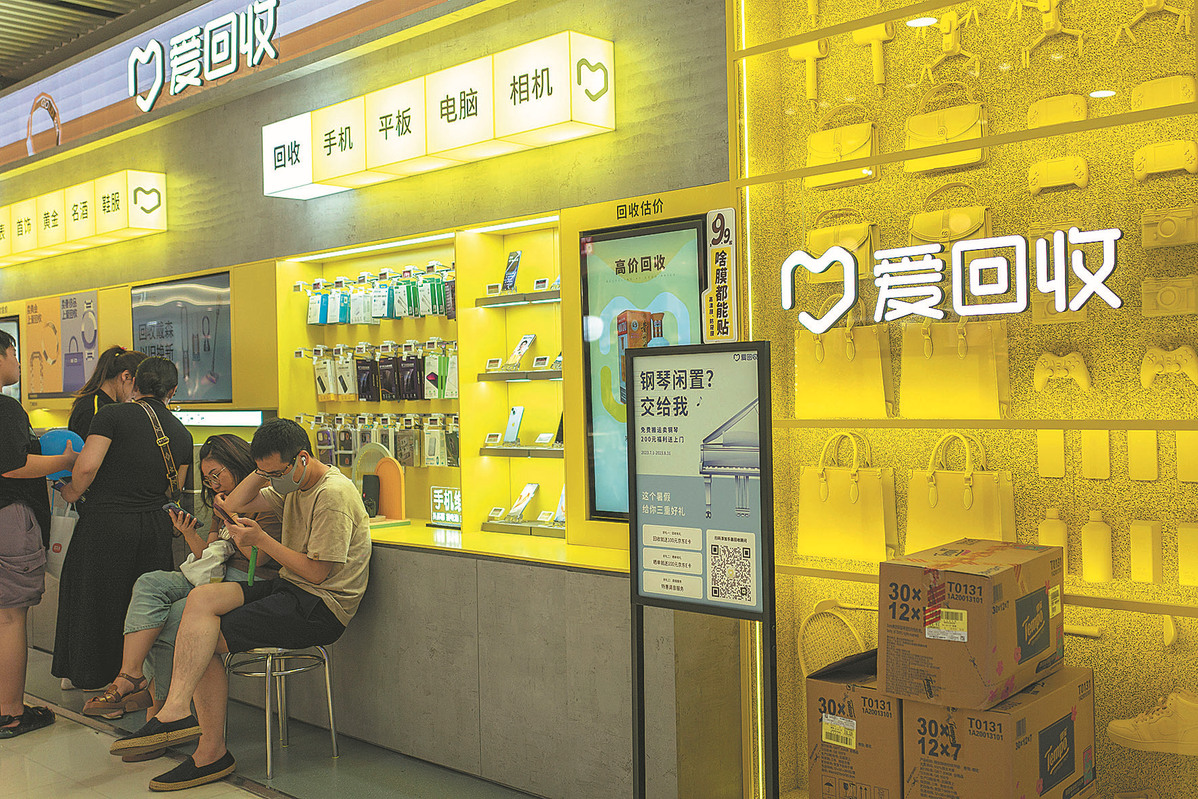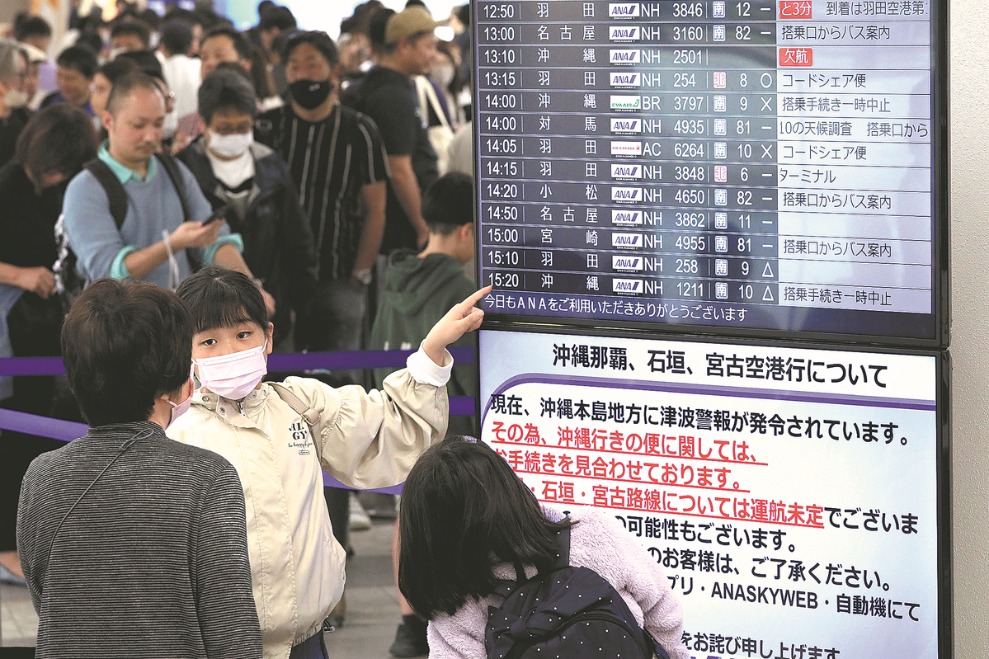Offline pre-owned product shops proving all the rage
By WANG KEJU | CHINA DAILY | Updated: 2024-03-08 09:56

As the secondhand economy continues to evolve in China, the combination of online and offline channels will be crucial for platforms seeking to thrive in a competitive market by providing tangible and trustworthy buying and selling experiences that appeal to a wider range of consumers, said analysts and executives.
The first offline store of Xianyu, the country's largest secondhand products trading platform, opened in Hangzhou, Zhejiang province, in late January, thus bringing convenience and reliability of online pre-owned goods trading to a brick-and-mortar retail setting.
The three-floored shop offers a diverse range of products, with the first floor featuring clothing, beauty products and collectibles, the second floor furniture and household appliances, and the third floor dedicated to books and retro vinyl records.
"Consignors bring their items to the store and scan a QR code to initiate the process. The store then provides an estimated price, which the consignor confirms within the app. Once confirmed, the store lists the items for sale, and once sold, the consignor receives payment," said manager of the offline store who goes by the name Kenny.
The warehouse was already bursting at the seams on the first day, Kenny said, adding that the store received over 40 consignment orders, totaling over 600 items, with many items already having been sold.
According to the store's fee structure, consigned items valued at 1,000 yuan ($139) or above will incur a service fee of 10 percent of the item's price. For items priced between 100 yuan and 1,000 yuan, the service fee will be 20 percent, and for items below 100 yuan, the service fee will be 30 percent.
Offline stores allow customers to see, touch and inspect products physically before making a purchase. This experience helps build trust and confidence in the quality and condition of used items, addressing common concerns associated with online transactions, said Li Yongjian, a researcher at the Chinese Academy of Social Sciences.
Meanwhile, offline stores enable secondhand e-commerce platforms to tap into new customer segments that prefer in-person shopping experiences. Some customers may have limited access to — or familiarity with — online platforms, making offline stores a valuable modality for reaching and serving these individuals, Li said.
In addition to Xianyu — a secondhand trading platform with a plethora of product categories available — online recycling platforms focused on electronic products are also increasingly recognizing the need to expand into the offline realm with brick-and-mortar stores.
Aihuishou.com, an online electronics recycling platform, boasted a presence in 273 cities with a total of 1,952 stores by the end of September. Moreover, Zhuanzhuan, also a pre-owned electronic products trading platform, surpassed the 300-store mark nationwide at the end of last year.
While offline stores present unique opportunities and advantages, platforms must strike a balance between the benefits gained and the associated costs and management responsibilities.
The transition from an online-only presence to a combination of online and offline operations brings with it a set of financial burdens. Rent for physical spaces, particularly in prime locations, can be a substantial expense for platforms venturing into the offline market, said Zhu Keli, founding director of the China Institute of New Economy.
Additionally, personnel costs, including wages, benefits and training, add to the financial strain. Furthermore, the logistics of managing inventory and fulfilling orders in a physical store presents their own challenges, requiring efficient processes and infrastructure, Zhu said.
Apart from the financial aspects, platforms must also contend with the ongoing maintenance and management of their offline stores. As the number of stores increases, so does the complexity of overseeing operations, ensuring consistent branding, and maintaining a high level of customer service. Supervising multiple locations requires careful coordination, effective communication and strong management practices to ensure a seamless customer experience across all retail venues, he added.
























